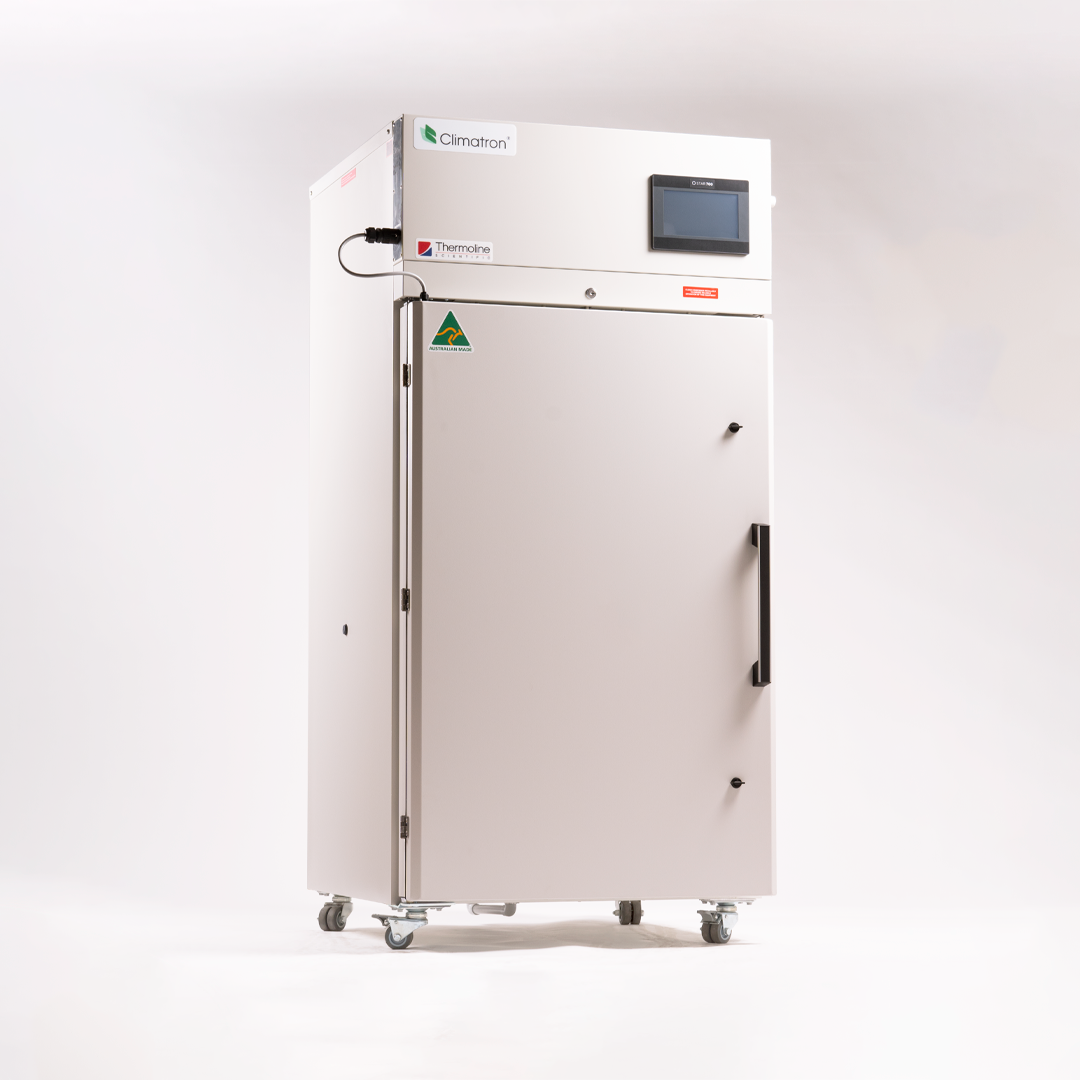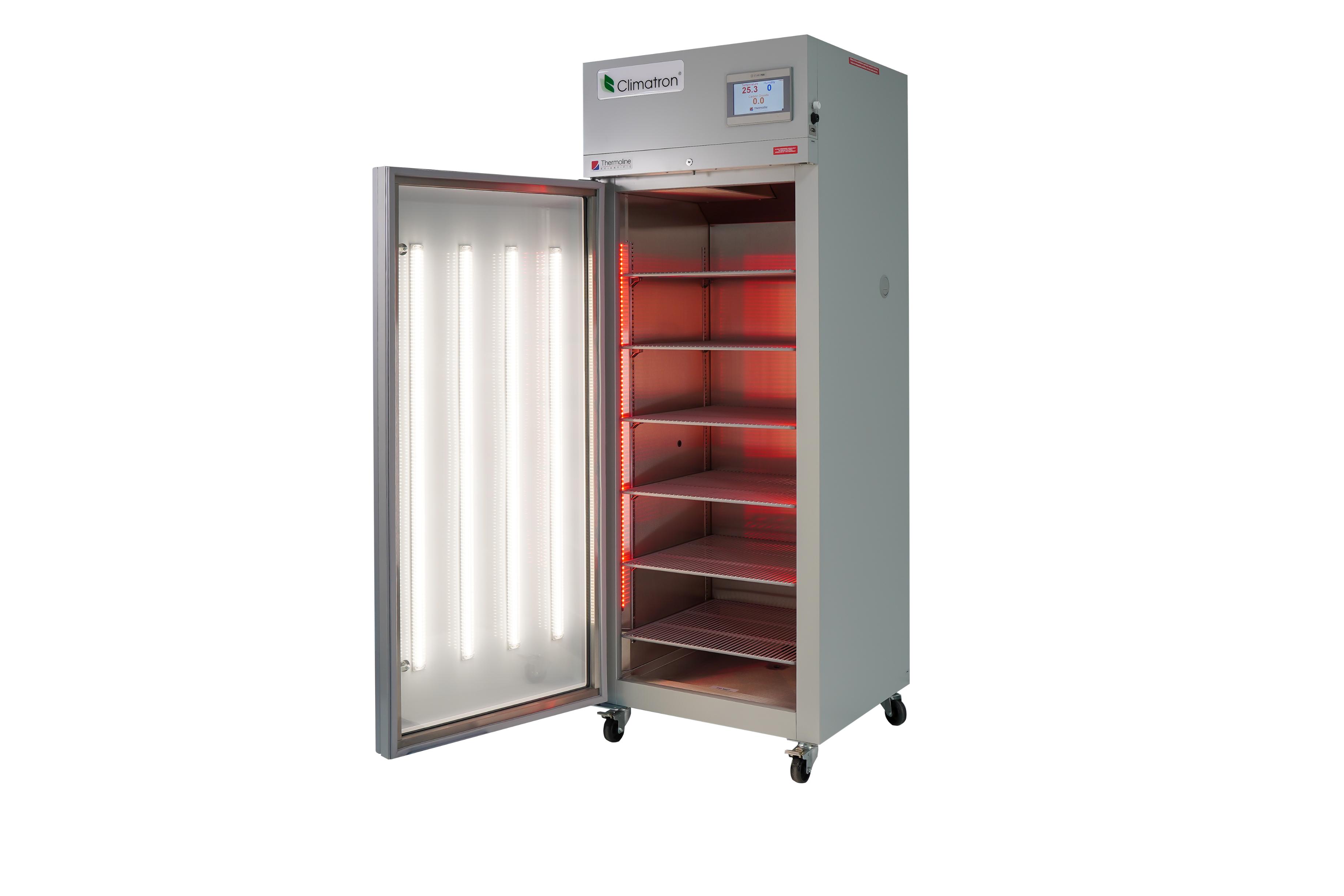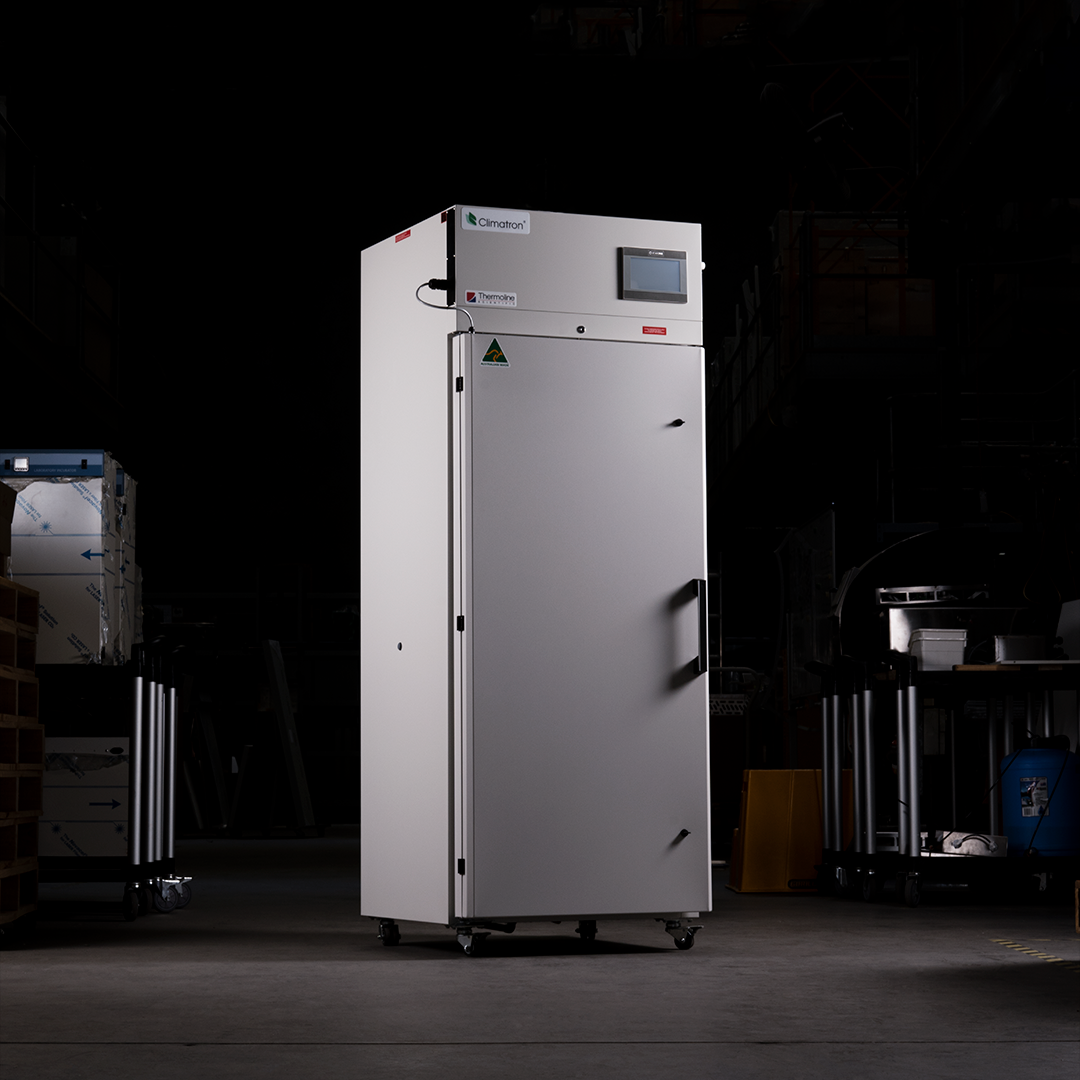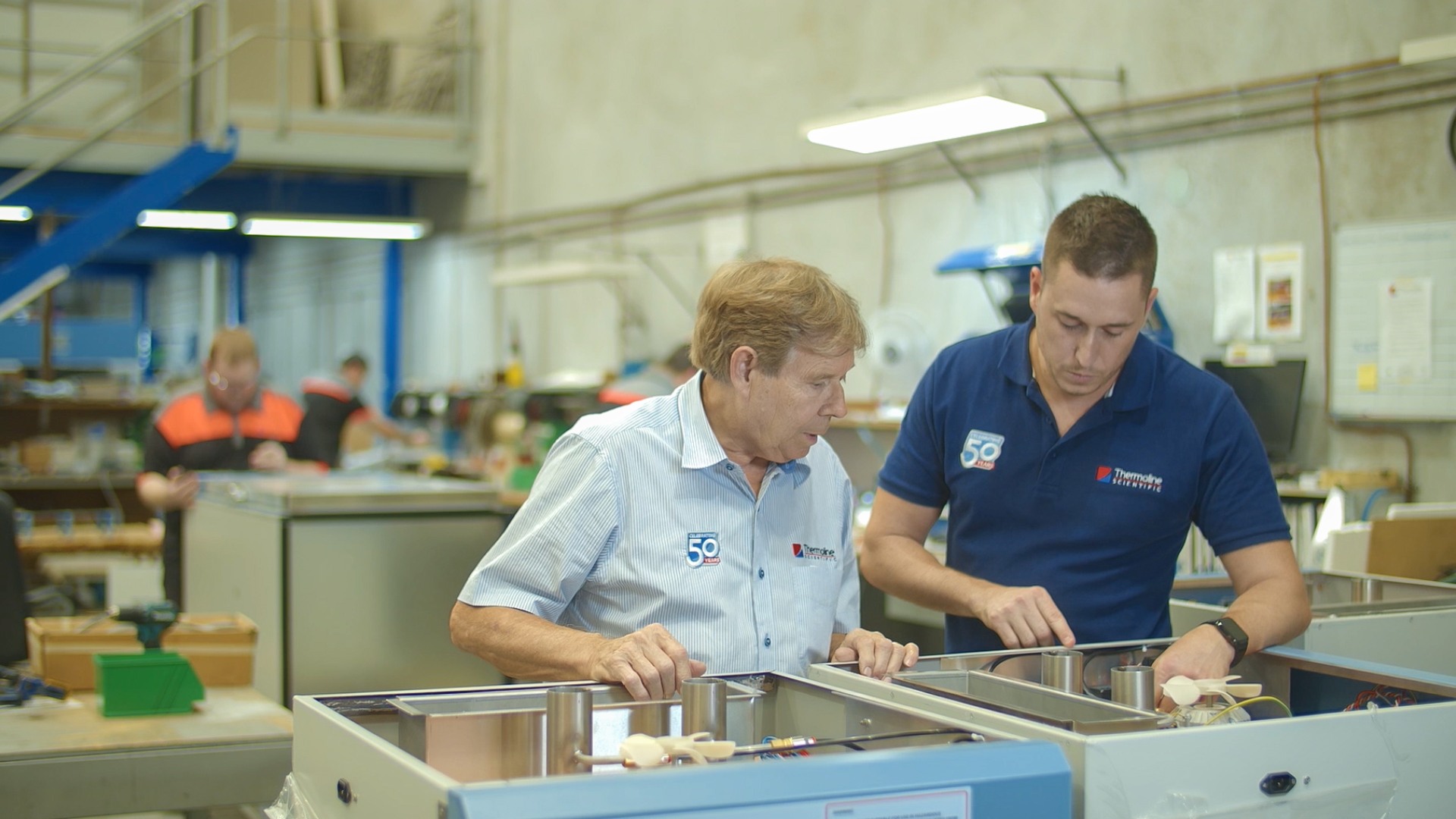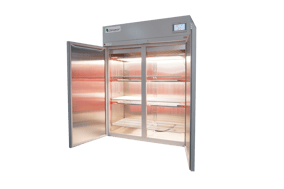Climatron Growth Cabinet with Door Lighting CLIMATRON-DL
With our Climatron reach-in plant growth cabinets, your seedlings and plants will thrive in optimal conditions.
This range of Climatron plant growth chambers provides lighting mounted to the door.
Climatron plant growth cabinets are widely used in plant biology research, horticulture, and agriculture. They allow for precise control over the growing environment, which can significantly influence plant growth, development, and productivity.
Overview
Our Climatron reach-in plant growth cabinets are designed to maintain conditions that are critical for a wide range of research applications where temperature, humidity, and lighting need to be precisely controlled. These applications include:
- Arabidopsis
- Seedling storage
- Seedling germination
- Plant growth
- Plant pathology
- Plant production
- Tissue culture
- Propagation
Key Features
- Variety of Sizes: Available in three sizes: single-door upright 360L and 520L capacities, and a double-door 1100L capacity.
- Superior Airflow: An upward, fan-forced airflow maintains the cabinet's conditions, ensuring superior temperature uniformity for optimal plant growth.
- Customisable Options: Humidity and carbon dioxide control are optional in all sizes, allowing customisation to suit your application and budget.
Design and Construction
- Durable and Easy to Clean: With a Colorbond exterior, stainless steel interior, and PVC-coated shelves, these cabinets are highly corrosion-resistant and easy to clean.
- Mobility: All cabinets are fitted with heavy-duty lockable castors, allowing them to be moved easily for servicing or cleaning.
Advanced Control System
- STAR X Touchpad Control System: Adjust the temperature, lighting, humidity, or carbon dioxide with ease using our Select Touch and Run (STAR X) touchpad control system.
- Real-Time Synchronisation and Data Logging: The STAR X system allows for real-time synchronisation of programmed settings and logs performance data to onboard memory, holding up to 365 days of data. Data can be viewed in real time, logged for up to 800 days, and downloaded onto an Excel spreadsheet.
- User-Friendly Interface: The STAR X system includes a live trend screen for quick performance checks and allows for easy data archiving and review via a PC without requiring specific software.
Lighting Options
Based on almost 100 years of experience with lighting technologies, Vossloh-Schwabe develops and manufactures LED solutions on proven industry platforms tailored to specific applications. The Climatron utilises high-output LED lighting in three colour options:
- 4000K: Neutral light, similar to Cool White T5 fluorescent lamps, suitable for standard applications.
- Leaf (2700K): Optimised for vegetative growth of plants and vegetables, with increased spectral emission in the far red and green spectral ranges.
- Bloom (1900K): Optimised for ornamental plants and young seedlings, focusing on the blue and red spectral ranges to maximise photosynthesis efficiency.
Benefits
- Precise Environmental Control: Maintain exact temperature, humidity, and lighting conditions for various research applications, ensuring optimal plant growth and development.
- Customisation and Flexibility: Available in multiple sizes with optional humidity and carbon dioxide control, these cabinets can be tailored to meet specific research needs and budgets.
- Advanced Data Management: The STAR X system provides comprehensive data logging and real-time monitoring, enhancing the consistency and efficiency of your research.
Choose Climatron reach-in plant growth cabinets for reliable, precise, and customisable environmental control in your research applications. Trust in Thermoline's expertise to provide high-quality, Australian-made solutions for your laboratory needs.
Specifications
- Dimensions
-
CLIMATRON-520-(DL/SL) CLIMATRON-1100-(DL/SL) External WxDxH (mm)
Shelf Lighting Models740x840x2040 1470x840x2040 WxDxH (mm)
Door Lighting Models740x890x2040 1470x890x2040 Internal WxDxH (mm) 590x530x1430 1320x530x1430 Clearance Front (mm) 740 Back (mm) 100 Sides (mm) 100 - Technical Specification
-
CLIMATRON-520-(DL/SL) CLIMATRON-1100-(DL/SL) Temperature Range +4°C to 40°C (lights off)
+10°C to 40°C (lights on)Temperature Control Stability +/- 0.2°C Temperature Uniformity +/- 2.0°C (unloaded lights off) Humidity Range Ambient to 90%RH
as per temperature and humidity performance graphsHumidity Uniformity +/- 5%RH (unloaded lights off) CO2 Range (Optional) Ambient to 3000 PPM Nominal Capacity 520 1100 Porthole Diameter 13mm (50mm with humidity option) Light Intensity at 20°C
Shelf Lighting Models
(Light intensity measured using
4000K lights)4x LED Rails Per Tray
400 µmols/m2/sec
(measured 300mm from light source)
Note: By placing two Shelf Light Trays on top of each other, it is
possible to achieve intensities up to 650µmols at 300mmLight Intensity at 20°C
Door Lighting Models
(light intensity measured using 4000K
lights)4x LED Rails
400 µmols/m2/sec
(measured 300mm from light source)8x LED Rails
400 µmols/m2/sec
(measured 300mm from
light source)Weight 170kg 280kg Electrical 10A/230V Heat Output 500 watts to 2000 watts (dependant on operating conditions) Noise Level @ 1 metre (dbA) 64 Power Consumption (kWh/24) 8.5
(dependant on operating conditions)Refrigerant Type R134a - Features
-
Climatron 520 Climatron 1100 Shelves (Door Lighting) 4 (DL) 4 levels (DL) Shelf Lighting Shelf Mounted Lighting (Max 3) Shelf Mounted Lighting (Max 3) Lockable Castors ✔ ✔ Fan Forced Air Circulation ✔ ✔ Star X Touch Screen ✔ ✔ Ethernet port ✔ ✔ Download data to USB ✔ ✔ Battery Backed-up alarms ✔ ✔ BMS ✔ ✔ Door Locks ✔ ✔ Supply Line Water Filters
1x Carbon, 1x Sediment✔ ✔ Ecofoam Insulation ✔ ✔ - Safety
-
Climatron 520 Climatron 1100 Over Temperature Safety ✔ ✔ Element Safety Cutout ✔ ✔ - Options
-
Climatron 520 Climatron 1100 Shelf or Door Lighting Nomenclature designations: Shelf Lighting (SL), Door Lighting (DL) Door Lighting LED Lighting mounted to the outside of the glass door 55L Pump Water Feed Tank Pump feed water supply where mains water is unavailable Drain Pump Drain Pump for when a suitable drain is unavailable Additional Shelves Additional shelves and clips can be supplied CO2 Control Set Point Control of CO2 Between Ambient and 3000ppm Additional Port Holes Additional 13mm port holes or 50mm port holes can be added to the side walls Ultrasonic Humidification Internally mounted humidifier (-H) STAR X-DIM Option to control light intensity from the touchscreen
Downloads
Support & FAQs
At Thermoline, we strive to supply helpful customer support to ensure that you get the most out of our products. We are committed to providing whatever support our customers need, wherever they are in the world. If you can't find your solution in the below FAQs or Knowledge Base, please contact our friendly support team.
- What are the advantages of using an ultrasonic humidifier to generate humidity?
There are several advantages to using an ultrasonic humidifier to generate humidity:
-
Energy efficiency: Ultrasonic humidifiers use less energy than other types of humidifiers, such as steam humidifiers. This is because they use high-frequency vibrations to create the mist, rather than heating the water to create steam.
-
Less heat: As above, no additional heat into the chamber allows for less energy consumption from the refrigeration system and the ability to control lower temperatures.
-
Low maintenance: Ultrasonic humidifiers have fewer parts and are less likely to become clogged or dirty than other types of humidifiers, making them easier to clean and maintain.
-
- What is a plant growth cabinet?
A plant growth cabinet, also known as a plant growth chamber, is a controlled environment system that simulates and studies plant growth under controlled environmental conditions. It typically has an enclosed chamber with controlled lighting, temperature, humidity, and carbon dioxide (CO2) levels.
Plant growth cabinets are used in plant science research to study the effects of environmental factors on plant growth and development. By controlling environmental conditions, researchers can investigate how plants respond to temperature, light intensity, humidity, and atmospheric composition changes, among other factors.
Plant growth cabinets can study various plant species, including crops, horticultural plants, and model organisms such as Arabidopsis thaliana. They are also used for plant breeding, genetic research, and testing the effectiveness of plant growth regulators and other agrochemicals.
Plant growth cabinets can vary in size and complexity, from small bench-top models to larger walk-in chambers. They are typically equipped with sensors and controllers that allow researchers to monitor and adjust environmental conditions to maintain precise control over the growing environment.
- Why is it important to have efficient light in a growth chamber?
Efficient light is essential in a growth chamber because it directly affects the growth and development of plants. Light is a critical factor in photosynthesis, the process by which plants convert light energy into chemical energy to fuel growth and metabolism.
Efficient light in a growth chamber refers to using high-quality, energy-efficient light sources that provide the appropriate light spectrum and intensity for optimal plant growth. The light spectrum and intensity requirements vary depending on the specific plant species and growth stage. For example, plants typically require higher levels of blue light during vegetative growth and higher levels of red light during flowering and fruiting.
Efficient light in a growth chamber also refers to using light fixtures and reflectors that minimise heat generation and distribute light evenly across the plant canopy. Excessive heat can damage plants and reduce their growth, so it's important to use light fixtures that generate minimal heat and distribute light evenly to prevent hot spots.
Efficient light is essential in a growth chamber because it can significantly affect plant growth and development. A sufficient or low-quality light can lead to stunted growth, reduced photosynthesis, and lower yields. In contrast, efficient light can promote healthy growth and development, increase yields, and enhance the nutritional value of crops.
- What is the best colour light for plant growth?
The best colour of light for plant growth depends on the specific growth stage and the type of plant being grown. Different light colours can promote different aspects of plant growth and development, and plants have different optimal light requirements depending on their species and growth stage.
In general, plants use red and blue light most efficiently for photosynthesis. Blue light is important for vegetative growth, as it promotes the development of chloroplasts, which are responsible for photosynthesis. Red light is important for flowering and fruiting, as it encourages the production of phytochrome, a pigment that regulates the timing of these processes.
However, green light is less efficiently used for photosynthesis by plants because it is reflected by chlorophyll, which makes plants appear green. Green light may even inhibit some aspects of plant growth. As a result, some researchers have suggested that light sources with a higher proportion of red and blue light are more effective for promoting plant growth.
In addition to red and blue light, plants also require small amounts of other colours of light, such as far-red light, which can promote seed germination and regulate plant development.
- What is Dew Point?
The dew point is the temperature at which dew (condensation) forms and is a measure of atmospheric moisture. It is the temperature to which air must be cooled at constant pressure and water content to reach saturation. Dew points are expressed as a temperature. Higher dew points correlate to higher moisture content, also known as absolute humidity.
The dew point represents the lowest temperature to which air with specific temperature and relative humidity (RH) can be cooled. At the dew point, air has a relative humidity of 100%, and additional cooling produces condensation rather than lowering the air temperature.
- Do I need a water tank to supply water to the cabinet?
- You only need a 25L/55L water tank if your cabinet cannot be connected to mains water supply. If mains water supply is not possible, 25L gravity and 55L pump water feed tanks are available to supply water to the cabinet. As a rule of thumb, a cabinet running at 90%RH will deplete a 55L water tank in approximately three days.

